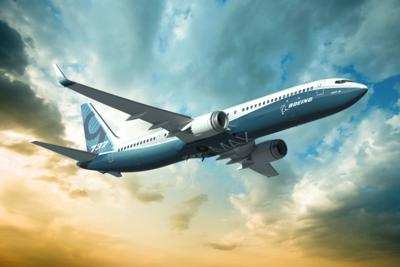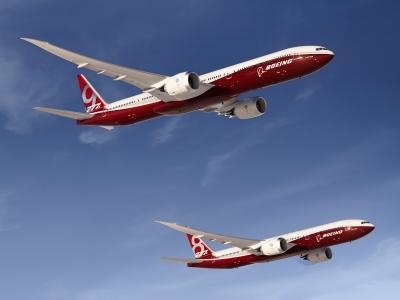Tue, Feb 11, 2014
Region Represents 36 Percent Of The World's New Airplane Deliveries
Strong economic and passenger growth will be main drivers of new airplane demand in the Asia Pacific region, according to estimates released just ahead of the Singapore Air Show by Boeing. The planemaker thinks the region's airlines will need an additional 12,820 airplanes valued at $1.9 trillion, representing 36 percent of the world's new airplane deliveries over the next 20 years.

"Asia Pacific economies and passenger traffic continue to exhibit strong growth," said Randy Tinseth, vice president, Marketing, Boeing Commercial Airplanes during a media briefing before the opening of the Singapore Airshow. "Over the next 20 years, nearly half of the world's air traffic growth will be driven by travel to, from or within the region. The Asia Pacific fleet will nearly triple, from 5,090 airplanes in 2012 to 14,750 airplanes in 2032, to support the increased demand."
Boeing's data projects that passenger airlines in the region will rely primarily on single-aisle airplanes such as the Next-Generation 737 and the 737 MAX, a new-engine variant of the market-leading 737, to connect passengers. Single-aisle airplanes will represent 69 percent of the new airplanes in the region.
"New low-cost carriers and demand for intra-Asia travel have fueled the substantial increase in single-aisle airplanes," said Tinseth. "Fuel-efficient airplanes like the Next-Generation 737 and 737 MAX help the growing number of low-cost carriers operate more efficiently and provide affordable fares to the emerging middle class."

For long-haul traffic, Boeing forecasts twin-aisle airplanes such as the 747-8 Intercontinental, 777 and the 787 Dreamliner will account for 28 percent of new airplane deliveries. Boeing's recently launched 787-10 and 777X also will support the demand for fuel-efficient twin-aisle airplanes in the region. Singapore Airlines already ordered 30 787-10s helping launch the program at the 2013 Paris Air Show and Cathay Pacific recently ordered 21 777-9X airplanes.
(Images from file)
More News
Outboard Section Of The Right Wing And The Right Flap Separated In Flight And The Airplane Impacted A Farm Field Analysis: The pilot was approaching his destination airport under i>[...]
Final Approach Fix The fix from which the final approach (IFR) to an airport is executed and which identifies the beginning of the final approach segment. It is designated on Gover>[...]
"Our choice of when to respond, how to respond and on which targets to respond is a consideration that we make every time... Netanyahu also noted that anyone attacking Israel &ldqu>[...]
Estimated (EST) When used in NOTAMs “EST” is a contraction that is used by the issuing authority only when the condition is expected to return to service prior to the e>[...]
Aero Linx: Coalition of Airline Pilots Associations (CAPA) The Coalition of Airline Pilots Associations (CAPA) is the world’s largest pilot trade association representing ove>[...]
 NTSB Final Report: Cessna 177B
NTSB Final Report: Cessna 177B ANN's Daily Aero-Term (05.08.25): Final Approach Fix
ANN's Daily Aero-Term (05.08.25): Final Approach Fix Aero-News: Quote of the Day (05.08.25)
Aero-News: Quote of the Day (05.08.25) ANN's Daily Aero-Term (05.09.25): Estimated (EST)
ANN's Daily Aero-Term (05.09.25): Estimated (EST) ANN's Daily Aero-Linx (05.09.25)
ANN's Daily Aero-Linx (05.09.25)




